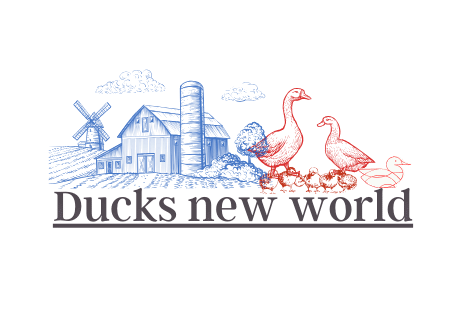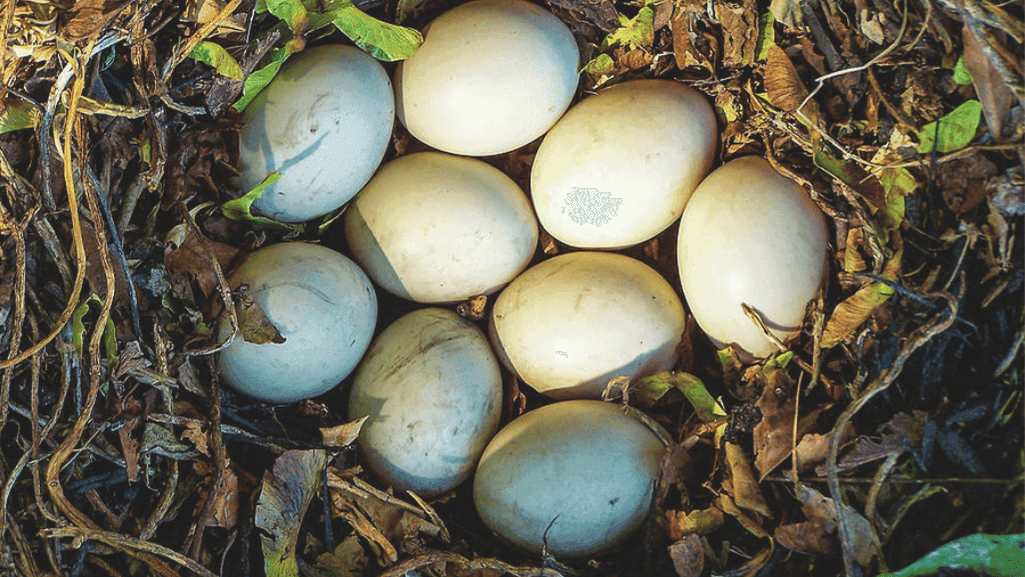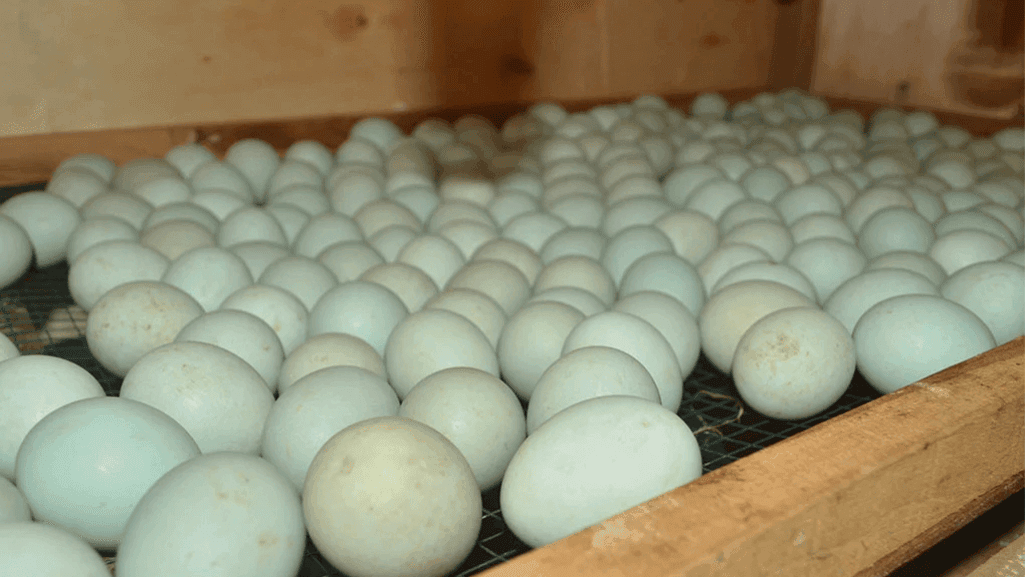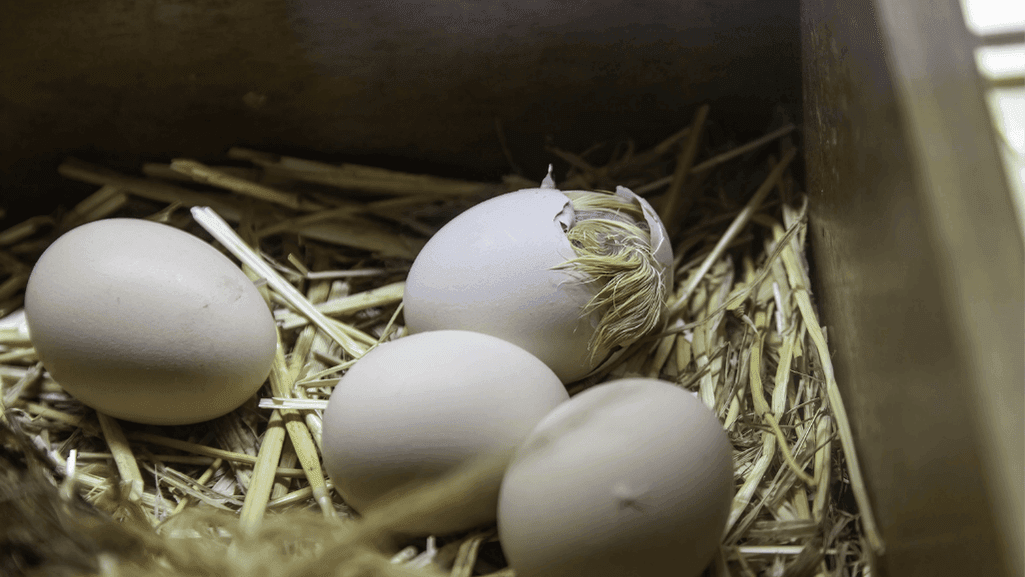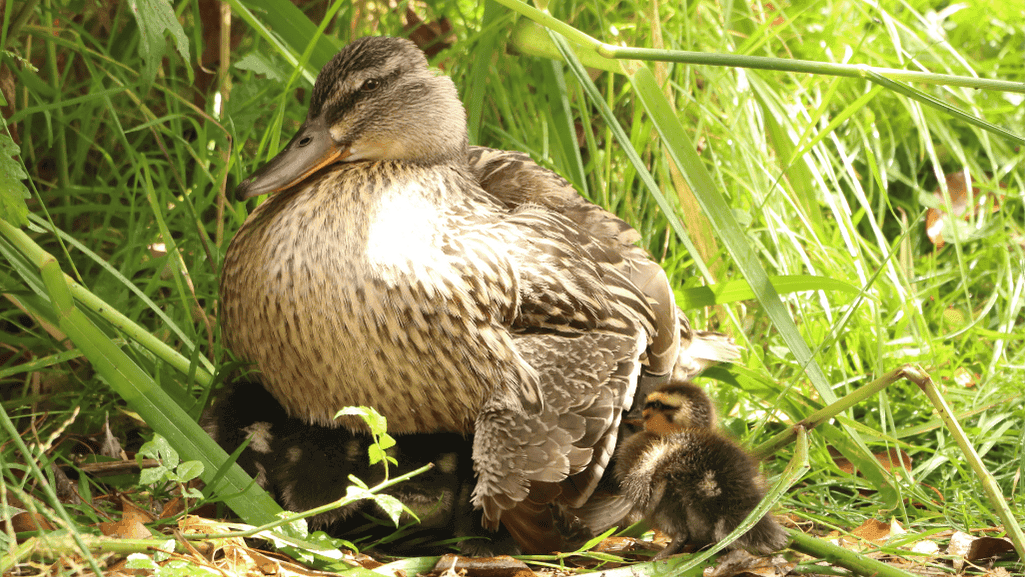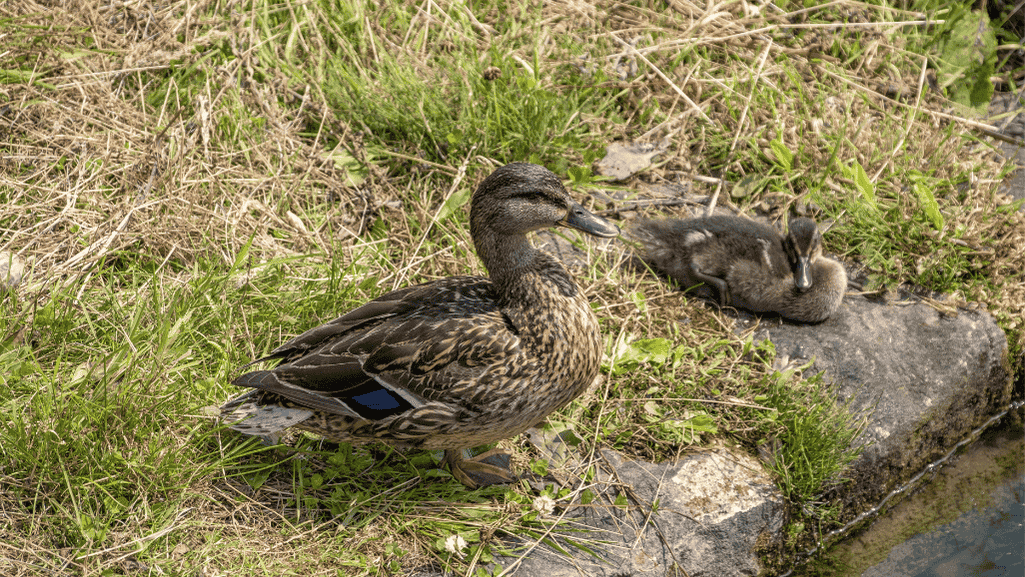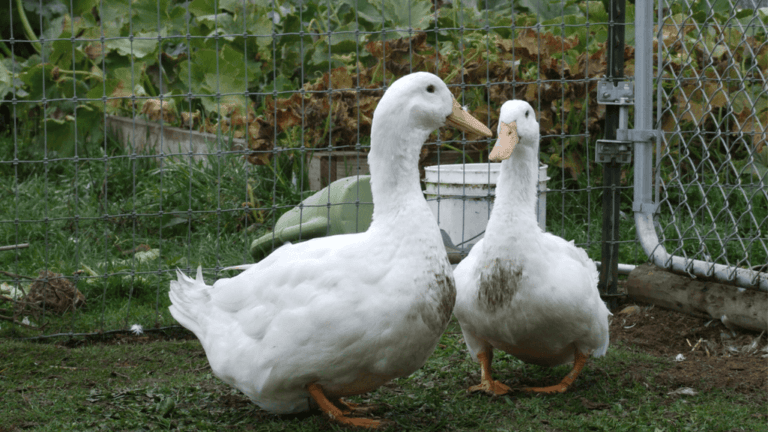Raising mallard eggs to hatching is a rewarding task that needs knowledge and care. Whether for conservation, hobby farming, or education, setting up the right environment is key. Our mallard egg incubation guide will help you from egg collection to hatching mallard eggs and caring for mallard hatchlings.
These steps are vital for the mallard population, with 19 million breeding birds in North America. It’s not just about keeping eggs warm. It’s also about turning them and watching for signs of growth. For a detailed guide, check out this resource to get ready for this exciting journey.
Key Takeaways
- Proper incubation requires a stable temperature between 99.3 and 99.6 degrees Fahrenheit and humidity levels of 45% to 55%, increasing to 65% at the onset of hatching.
- Eggs should be positioned small end down and turned multiple times daily to prevent the embryo from sticking to the eggshell.
- After 25 days of incubation, eggs should have lost approximately 14% of their weight and be transferred to a hatcher with a temperature of 37.2°C (99°F) and humidity at 65%.
- Ducklings are ready to venture from the nest within 13-16 hours post-hatching, showing the strength and resilience of mallard young.
- After hatching, ducklings need a warm, safe place with the right food to grow strong before they can be released near water.
Understanding Mallard Eggs
Mallard eggs are full of interesting facts, from their characteristics to the color variations and nutritional value. Learning about these aspects helps us understand mallard ducks better. It also makes us better at caring for them and appreciating their role in our ecosystems.
Characteristics of Mallard Eggs
Mallard eggs are tough and big, which helps the baby duck inside survive. A female mallard lays about 12-13 eggs at a time. These eggs are creamy, grayish, or greenish buff, and are quite large.
This big clutch size is key for the mallard population. It helps them grow, despite many predators.
Color and Size Variations
The color variations in mallard eggs depend on the female duck’s diet and health. The nutrients she gets affect the egg’s color, thickness, and strength. These changes can tell us about the environment and health of the ducks.
Mallard eggs are also very nutritious. They are full of proteins and fats. This makes them great for ducklings and a healthy food for humans too. Knowing this is important for farmers and cooks who use mallard eggs.
Understanding the characteristics of mallard eggs helps us protect these birds better. It’s good for learning, cooking, or just caring for our environment. Knowing about mallard eggs helps us see how amazing and strong these birds are in nature.
Incubation Process
The incubation process of mallard eggs is key to their healthy growth and successful hatching. This part talks about the best conditions for incubation, how long it takes for mallard eggs to hatch, and the common issues during this critical time.
Ideal Conditions for Incubation
To get the best incubation conditions for mallard eggs, keeping the temperature at 99.5°F and humidity at 86% for the first 25 days is vital. Keeping these conditions steady is a must. From day 26 to hatching, the humidity is raised to help the eggs lose the right amount of water, which is key for hatching.
Duration of Incubation
The incubation duration for mallard eggs is usually between 26 to 29 days. This time can change a bit based on the incubator or natural nest conditions.
Common Challenges During Incubation
Several mallard egg incubation challenges come up during incubation. Keeping the temperature and humidity just right is the biggest challenge, mainly for new breeders. Changes in the environment can harm the embryos. Also, turning the eggs regularly is needed to stop the embryo from sticking to the shell, a task that needs care and consistency.
Knowing these incubation details helps breeders and conservationists ensure mallard populations grow and stay healthy. Managing these factors well is key to the successful hatching and survival of these interesting birds.
Hatching Timeline
The hatching of mallard eggs is a miracle of life. Watching the mallard egg hatching signs gives us a peek into the journey from egg to duckling. It shows us the key phases of the mallard egg hatching period.
Signs of Approaching Hatching
As hatching time, usually between 26 to 29 days, gets closer, the excitement grows. One of the first signs is when a duckling breaks its bill through the egg’s inner membrane, called “internal pipping.” This happens 1 to 2 days before the duckling cracks the outer shell.
After pipping, the duckling might rest for up to a day. It absorbs nutrients from the yolk sac. This is a critical time for energy.
Typical Hatching Period
The mallard egg hatching period is a detailed process. It ensures the safe birth of a duckling. After internal pipping, the duckling starts to break out of the shell, known as ‘zipping.’ This can take a few hours to a full day.
Knowing these steps helps create the best hatching conditions. This includes keeping the incubation temperature at 99.5 degrees Fahrenheit and humidity at 55%. Proper care and monitoring can help avoid problems and ensure a successful hatch.
By understanding the hatching timeline, we help the ducklings grow well. We also support a sustainable way to care for these amazing birds.
Post-Hatching Care
After mallard ducklings hatch, they need the right care to survive and grow. This includes meeting their immediate needs, feeding them well, and keeping their environment safe. It’s a critical time for their development.
Immediate Needs of Hatchlings
Mallard ducklings are born ready to move and need a warm, dry place to live. A brooder with a heat source at 90°F is perfect. It should get cooler each week.
They also need fresh water and clean bedding. This keeps them safe from drowning and ensures they stay healthy.
Nutrition for Young Mallards
Feeding ducklings the right food is key for their growth. Start with a special starter feed that has all the nutrients they need. You can also give them small bits of hard-boiled eggs or mealworms.
This diet helps them grow strong and supports their bones.
Creating a Safe Environment
Creating a safe space for ducklings means more than just keeping them from harm. It’s about letting them be ducks. They should be able to swim and forage without danger.
Use strong fences and safe shelters. Make sure water is accessible but safe from drowning.
For more tips on raising mallard ducklings, check out resources on wildlife care. They offer insights on growth stages and more. This knowledge helps with both domestic care and understanding these birds in the wild.
Behavior of Mallard Mothers
Mallard mothers show fascinating behaviors, mainly in caring for their ducklings. Learning about mallard mothers behavior, nesting habits, and duckling care technique helps us understand wildlife nurturing and how they adapt to their environment.
Nesting Habits
Female mallards pick nesting sites carefully, often up to 1.7 kilometers from water to avoid predators. They build nests on the ground, hidden by dense vegetation or logs. The nest, about 7 inches wide, is lined with feathers and plants for warmth.
They lay one egg a day until they have 8 to 12 eggs. This way, all eggs hatch at the same time. This is important for the ducklings to move to water safely together.
Learning about hatching and early duckling life is key to understanding their survival.
How Mothers Care for Ducklings
When eggs start hatching, after about 28 days, the mother becomes very protective. The ducklings leave the nest soon after hatching. The mother leads them to water, keeping them safe from predators.
For the first 50 to 60 days, the mother teaches and protects her ducklings. She teaches them how to find food and defend themselves. This is important for them to become independent by late summer. Studying how mallards care for their ducklings shows their adaptability and resilience.
These behaviors are not just about survival. They also show how important these actions are for the species and their habitats. Watching mallards gives us a peek into the complex world of avian maternal care and the bigger ecological picture.
Risks and Predators
Mallard ducks face many challenges during breeding season, with predators of waterfowl eggs being a big threat. Knowing about these dangers is key for saving and managing these birds.
Common Threats to Mallard Eggs
Survival of mallard eggs is mainly at risk from predators, leading to many nest failures. Studies show that predation rates are very high. Eggs are often lost at 10% of nests just before hatching. Animals like raccoons, skunks, and certain birds like gopher snakes are the main culprits.
- Raccoons and skunks are big reasons for nest raids.
- Ground nesting ducks are extra vulnerable, making their protection urgent.
Strategies for Protection
To protect mallard eggs, several methods can be used. These include managing habitats and using technology. Placing nests away from predators and using nesting boxes can help. Also, making nests harder to find can protect the eggs.
Another approach is to change the environment. Studies show that less noise and movement around nests can help. This is very important during the 13–16 hours after hatching, when ducklings need to survive and bond with their mothers.
Research in places like the Suisun Marsh used GPS on raccoons and skunks. This gave insights into their movements and how they interact with nests. This knowledge helps in making targeted efforts to save more eggs and ducklings.
- Improving habitats to keep predators away.
- Using tech to watch and act against predators of waterfowl eggs.
- Getting the community involved and educated on the dangers and how to fight them.
Protecting these eggs is vital for the survival of mallards and the health of wetlands everywhere.
Reviving Abandoned Eggs
When you find abandoned mallard eggs, you must act fast. This is because these eggs are often left behind for various reasons. It’s a big challenge in wildlife care and raising ducks at home.
Identifying Abandoned Eggs
It’s important to know if a mallard egg is really abandoned. You should only think it’s abandoned if the mother doesn’t come back in a while. Ducks can be hard to watch, but it’s key to tell if they’re gone for good.
For more on duck behavior, check out this detailed guide. Knowing the difference between a duck leaving and not coming back is vital for saving the eggs.
Incubation Options for Found Eggs
Once you’re sure the eggs are abandoned, you need to find a way to keep them warm. You can use an incubator or find a broody hen to sit on them. Both methods keep the eggs at the right temperature and humidity.
Whether you use new tech or old ways, the goal is the same. You want to give these eggs a chance to hatch into healthy ducklings. For those caring for ducks or thinking of starting, knowing how to handle these eggs is key.
Using tips for backyard duck breeding can help. It gives you the skills to increase the chances of these eggs hatching. This way, an abandoned egg can become a new addition to your backyard.
Conclusion and Further Resources
In the world of mallard egg incubation and care, we’ve covered key points. This mallard egg incubation summary shows how important a stable incubation environment is. It needs consistent temperature and humidity.
Mallard ducks have special behaviors during nesting and caring for their young. It’s vital to know the threats to these waterfowl and how to protect them. This helps ensure the survival of eggs and hatchlings.
Summary of Key Points
Mallards are very adaptable, thriving in Canada or new territories. They face big challenges, like weight changes during breeding. They must lay, incubate, and raise their young in tough places like Southern Ontario or southern British Columbia.
With 8 to 12 eggs in a clutch and a 28-day incubation, ducklings’ survival is impressive. The breeding cycle’s nutrient dynamics are critical. Research from the 1970s helps us today, guiding conservation efforts like the NAWMP.
Additional Reading and Resources
For those interested in mallard reproduction, there’s a wealth of waterfowl hatching resources. Studies from decades ago reveal the importance of lipids and nutrients in mallard life. This knowledge is key for raising mallards and conserving their numbers and habitats.
Our guide offers a detailed look at mallard egg incubation and care. But, it’s essential to have widespread knowledge and conservation efforts for the species’ future.

